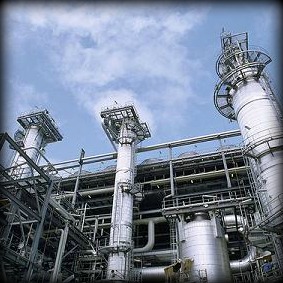Liquefied Fracked Gas: Coming Soon to the Salish Sea?
 BC is betting its economic future on liquefied natural gas (LNG). The whole plan centres on the concept of extracting gas in the northeast of the province, and then piping it to the west coast where it will be frozen into a liquid and pumped onto ships bound for Asia. But because most of the province's conventional gas reserves have already been extracted, most of the gas that will drive BC’s new LNG boom will have to be obtained through the hazardous and environmentally damaging method known as hydraulic fracturing (or "fracking").
BC is betting its economic future on liquefied natural gas (LNG). The whole plan centres on the concept of extracting gas in the northeast of the province, and then piping it to the west coast where it will be frozen into a liquid and pumped onto ships bound for Asia. But because most of the province's conventional gas reserves have already been extracted, most of the gas that will drive BC’s new LNG boom will have to be obtained through the hazardous and environmentally damaging method known as hydraulic fracturing (or "fracking").
Fracking results in the release of large amounts of methane, a gas which accelerates climate change to a far higher degree than the burning of carbon. For this reason, some experts warn that fracked gas is as harmful to the climate as the burning of coal. The fracking process also wastes massive amounts of our precious freshwater supplies, and threatens drinking water and air quality.
This is no longer an exclusively northern BC story, as a company called Woodfibre Natural Gas is proposing to build a plant on the site of an old pulp mill near Squamish, which will liquefy fracked gas and transfer it onto ships bound for the Salish Sea. They hope to run 1.5 to 2.1 million tonnes of this volatile product through the plant per year, and send 40 LNG tankers through Howe Sound annually.
Simultaneously, a company known as Quicksilver Resources is proposing building a similar plant – called "Discovery LNG" – on the site of another former pulp and paper mill in Campbell River, Vancouver Island. This project is potentially even more destructive, given the fact that a gas pipeline would have to be buried underneath the Georgia Strait to supply it with the large volumes of fracked gas it takes to keep one of these plants in business. We have yet to find out just how much fracked gas is being proposed to run through this facility in Campbell River, but we will keep you informed as this story unfolds.
There are many ways in which fossil fuel shipments on the Salish Sea impact the water and wildlife of this precious place. LNG carriers would add to an ever-increasing amount of ship traffic in the Salish Sea, resulting in foreshore and recreational impacts. These vessels also pose a serious threat to endangered orca whales in their critical habitat, because of noise disturbances and the added risk of being struck by a ship. In recent years, orca numbers grew so low that agencies in both Canada and the U.S. have expressed concern for their long-term survival, and the population is only just beginning to recover following decades of environmental abuse. And of course, no one wants to imagine a worst-case scenario in the event of a major accident involving a hazardous material like natural gas.
We need to see the big picture when it comes to proposals to build LNG plants on the shores of the Salish Sea: risky and damaging fracking at the point of extraction, climate impacts at the point of release and countless environmental and community risks in between. LNG on the Salish Sea is a massive step in the wrong direction, and it’s not something we are going to sit idly by and watch!